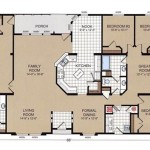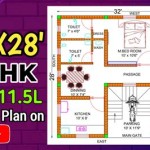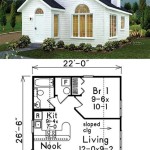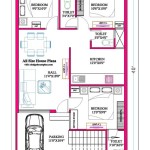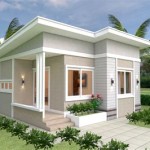House Plans: Universal Design Homes
When designing a home, it's crucial to consider accessibility and inclusivity for all individuals, regardless of age or ability. Universal Design Homes, often referred to as accessible or adaptable homes, are designed to meet the needs of a diverse range of occupants, ensuring comfort, safety, and independence.
Universal design principles aim to create spaces that are usable and accessible to people with varying physical, sensory, and cognitive abilities. By incorporating these principles into house plans, homeowners can create homes that accommodate their current and future needs.
Key Features of Universal Design Homes
- Accessible Entrances and Exits: Ground-level entrances, wide doors, and ramps eliminate barriers for individuals using wheelchairs or mobility aids.
- Open Floor Plans: Wide hallways and open layouts provide ample space for maneuvering and access to all areas of the home.
- Adaptable Interiors: Adjustable counter heights, roll-in showers, and grab bars allow for customization to suit individual needs.
- Visual and Auditory Aids: High contrast colors, non-glare lighting, and audio-visual enhancements improve accessibility for those with sensory impairments.
- Smart Home Technology: Voice-controlled devices, automated lighting, and remote monitoring systems enhance safety and independence.
Benefits of Universal Design Homes
Universal design homes offer numerous benefits for homeowners, including:
- Accessibility for All: They accommodate the needs of all individuals, regardless of age or ability, ensuring a comfortable and safe living environment.
- Future-Proofing: By incorporating universal design principles, homes can adapt to changing needs as individuals age or experience health conditions.
- Increased Value: Accessible homes are in high demand and often have higher resale value.
- Improved Quality of Life: They provide a sense of independence and well-being for individuals with disabilities.
How to Incorporate Universal Design into House Plans
To incorporate universal design principles into house plans, it's essential to work with an architect or designer who specializes in accessibility. They can assess your specific needs and recommend modifications to the home's design.
Here are some tips for incorporating universal design into your house plans:
- Plan for Aging in Place: Consider future needs, such as wider doorways and roll-in showers, to ensure the home remains accessible as you age.
- Consult with Experts: Seek advice from occupational therapists, aging-in-place specialists, and architects who specialize in accessibility to ensure the home meets all necessary standards.
- Implement Smart Home Technology: Smart home devices can enhance safety and independence for individuals with disabilities, such as automated lighting and voice-controlled appliances.
- Prioritize Safety: Install grab bars, non-slip flooring, and emergency call systems to ensure the home is safe and secure for all occupants.
By incorporating universal design principles into house plans, homeowners can create homes that are accessible, inclusive, and comfortable for everyone. These homes not only enhance the quality of life for individuals with disabilities but also add value to the property and benefit all occupants, regardless of age or ability.

Accessibility Designed Into The Home

Universal Design Accessible Luxury Home Plan 4673

House Plan Ud1014a Universal Design Series

Universal Design House Floor Plan

Universal Wisdom House Plan Three Story Best Ing Modern Home Design Mm 3556

Accessible House With Universal Design Features Plan 4673
%2C%2520courtesy%2520Resource%2520Furniture%2520(3).jpg?strip=all)
Universal Design Why Americans Need Home That Welcomes Everyone Architectural Digest

Universal Access Small House Plan 90205pd Architectural Designs Plans

2 Jpg

Universal Casita House Plan 61custom Contemporary Modern Plans

